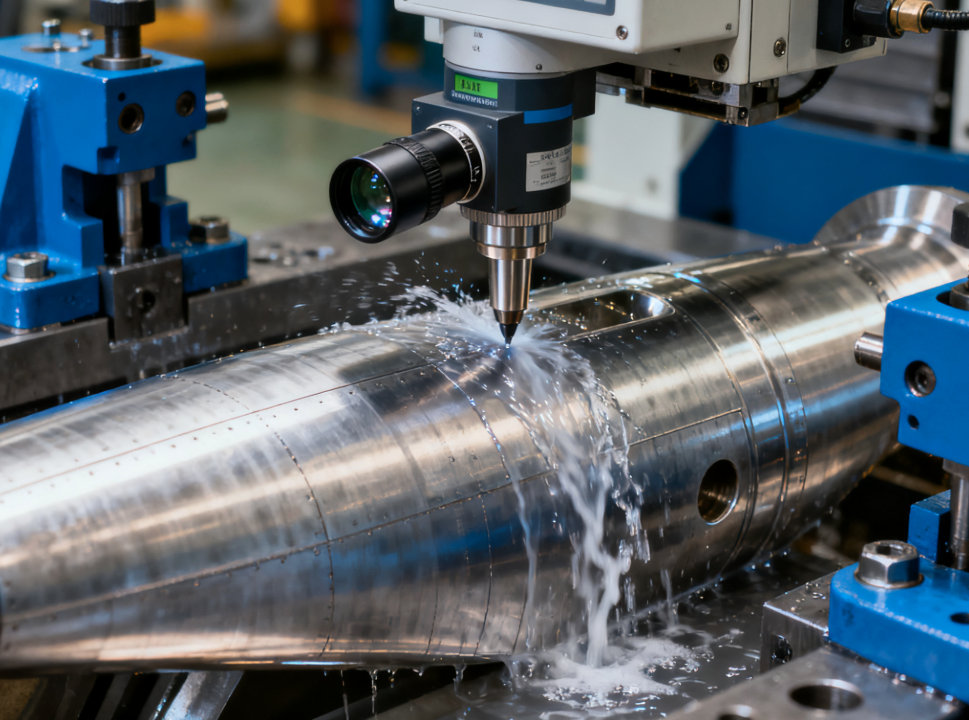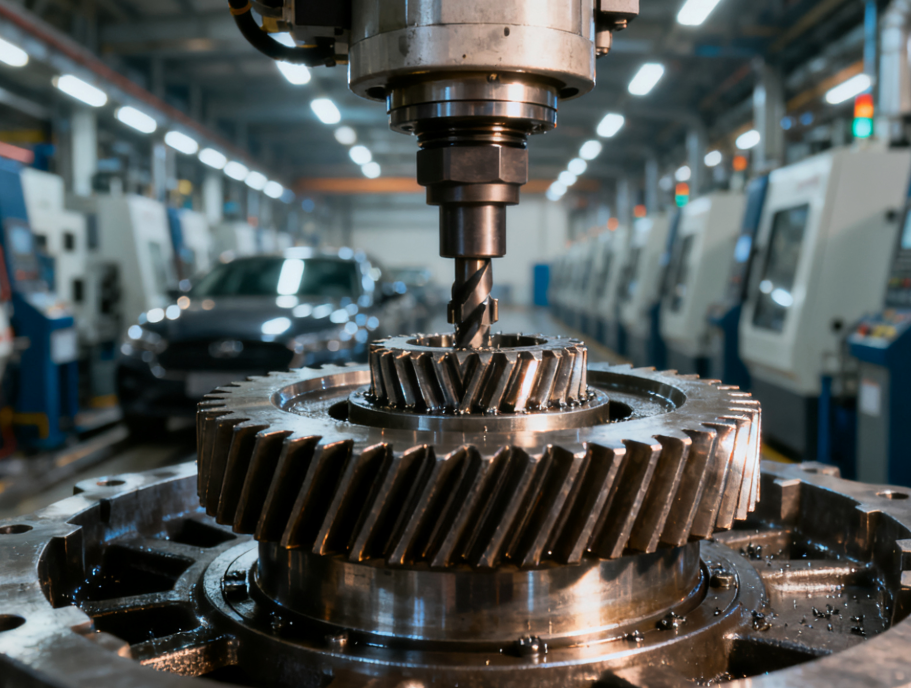


How CNC Machining Is Applied in Aerospace, And Automotive Sectors?
Views: 0 Author: Site Editor Publish Time: 2025-09-12 Origin: Site









CNC machining has become a cornerstone of modern manufacturing, enabling precision, repeatability, and efficiency. In aerospace and automotive industries, CNC machines produce critical components that must meet strict safety standards, complex geometries, and tight tolerances. Both industrial CNC machines and desktop CNC machines play a role—from prototyping to high-volume production—providing reliable support for CNC machining across all stages of design and manufacturing.
Aerospace Applications of CNC Machining
Aerospace components demand unmatched precision. From engine parts to structural elements, CNC machining ensures performance, safety, and reliability. In the aerospace industry, even the slightest deviation in dimensions can compromise the integrity of the entire aircraft. CNC machining provides the high level of accuracy required to meet these stringent standards.
Structural Components
CNC machining produces ribs, spars, flaps, and ailerons that give wings rigidity and control. These parts must withstand high stress and aerodynamic forces. For example, the ribs and spars in wings are critical for maintaining structural integrity during flight, while flaps and ailerons are essential for controlling the aircraft’s movement. The precision of CNC machining ensures that these components can handle the extreme conditions they face.
Materials: Aluminum alloys, titanium, composites. These materials are chosen for their strength-to-weight ratio and durability, which are crucial for aerospace applications.
Processes: 5-axis milling, CNC turning, grinding. These processes allow for the creation of complex shapes and precise dimensions, essential for structural components.
Desktop CNC machines allow engineers to prototype structural components before committing to full-scale production. This helps in identifying potential issues early in the design phase, saving time and resources.
Key Benefit: Precision ensures all parts fit together to reduce friction and wear, critical for flight safety. Properly fitted components also enhance the overall performance of the aircraft, contributing to fuel efficiency and reduced maintenance costs.
Engine and Powertrain Components
Engine mounts, turbine blades, and pylons require CNC machining to maintain strict tolerances. Turbine blades often have complex geometries that only multi-axis CNC machines can produce reliably. The precision of these components is vital for the efficient operation of the aircraft’s engines.
Materials: Superalloys, titanium, high-performance polymers. These materials are used for their ability to withstand extreme temperatures and mechanical stress, ensuring the longevity of engine components.
Processes: 5-axis CNC milling, precision CNC turning, EDM for hard metals. These advanced processes enable the production of intricate parts with high accuracy, which is essential for engine performance.
Support for CNC machining ensures repeatable accuracy for multiple engine components across global fleets. This consistency is crucial for maintaining the reliability of aircraft engines worldwide.
Highlight: Machined components must endure extreme temperatures, vibration, and load cycles. The ability to produce these components with high precision ensures that they can withstand the harsh conditions they face during flight.
Tail, Control Surfaces, and Interiors
Precision CNC machining produces elevators, rudders, cockpit brackets, and seat tracks. Smooth finishes and exact dimensions are critical to safety, movement, and comfort. These components play a crucial role in the aircraft’s control and the comfort of the passengers.
Processes: CNC milling, grinding, finishing. These processes ensure that the components have the required smoothness and precision, which is essential for their functionality.
Desktop CNC machines provide early-stage prototyping support, especially for interior fittings. This allows designers to test different designs and make necessary adjustments before full-scale production.
Impact: Enables rapid iteration in design and ensures consistent part quality across production. This not only speeds up the development process but also ensures that the final product meets the highest standards of quality and safety.

Automotive Applications of CNC Machining
CNC machining supports the production of engines, chassis, transmission parts, and high-performance components, offering both volume and accuracy. The automotive industry relies heavily on CNC machining to produce high-quality parts that meet strict performance and safety standards.
Engine Components
CNC machining produces cylinder heads, camshafts, and pistons with precise tolerances for optimal fuel efficiency and performance. These components are critical for the engine’s operation, and their precision directly impacts the vehicle’s performance and fuel consumption.
Materials: Aluminum alloys, titanium, steel. These materials are chosen for their strength, durability, and weight, which are essential for engine components.
Processes: CNC turning, milling, and finishing. These processes ensure that the components have the required dimensions and surface finish, which is crucial for their performance.
Desktop CNC machines help automotive engineers prototype new engine parts quickly. This allows for rapid testing and refinement of new designs, speeding up the development process.
Transmission and Drive Components
High-volume parts like gears, shafts, and bushings rely on CNC machining for consistency. Precision ensures longevity and smooth operation. These components are essential for the transmission of power from the engine to the wheels, and their quality directly impacts the vehicle’s performance and reliability.
Processes: CNC turning for shafts, EDM for complex gear profiles. These processes ensure that the components have the required precision and durability, which is essential for their function.
Support for CNC machining helps reduce scrap and maintain uniform quality across thousands of parts. This not only reduces waste but also ensures that every part meets the same high standards of quality.
Body Panels and Structural Frames
CNC machines cut and mill complex curves and frames, ensuring lightweight yet strong structures. Custom automotive parts, racing components, and low-volume runs are feasible using desktop CNC machines. This flexibility allows for the production of unique and high-performance parts that meet specific requirements.
Materials: Composites, aluminum alloys, high-strength steel. These materials are chosen for their strength, weight, and durability, which are essential for automotive applications.
Processes: CNC milling, laser cutting, waterjet cutting. These processes allow for the creation of intricate designs and precise cuts, which are essential for the production of body panels and structural frames.
Advantage: Intricate designs can be produced faster and more accurately than manual methods. This not only speeds up the production process but also ensures that the final product meets the highest standards of quality and performance.

Advantages of CNC Machining in These Sectors
Precision: Critical for safety and functionality.
Repeatability: Multiple identical parts meet tight tolerances.
Speed: Fast production without compromising quality.
Complex Geometries: Achievable on 5-axis CNC machines.
Prototyping Support: Desktop CNC machines enable early testing before mass production.
Challenges and Solutions
Tight tolerances and complex geometries demand careful planning.
Hard metals, composites, and polymers require specialized tooling.
Thermal expansion, stress, and vibration can affect machining accuracy.
Regulatory standards (FAA, AS9100) require strict quality control.
Support for CNC machining is critical for inspection, measurement, and post-processing.
Future Trends in Aerospace and Automotive CNC Machining
Hybrid Manufacturing: CNC + 3D printing allows lightweight, complex designs.
AI and Machine Learning: Improves efficiency and reduces manual intervention.
Industry 4.0: Smart factories integrate CNC machines into automated production.
Sustainability: Electric vehicles and greener aircraft still rely on CNC-machined precision parts.

FAQ
1. What is CNC machining and why is it important for aerospace and automotive industries?
CNC machining, or Computer Numerical Control machining, automates precision cutting, milling, and turning of materials using computer programs. It ensures high accuracy, repeatability, and efficiency, which is essential for aerospace parts like turbine blades and automotive engine components that must meet strict safety and performance standards.
2. How are desktop CNC machines used in aerospace and automotive applications?
Desktop CNC machines are often used for prototyping and small-scale production. Engineers can quickly test designs for structural components, engine parts, or interior fittings before committing to full-scale manufacturing. They provide support for CNC machining in the design phase, reducing errors and material waste.
3. What types of aerospace components are produced using CNC machines?
CNC machines produce structural components like ribs, spars, flaps, and ailerons. They also manufacture engine and powertrain parts such as turbine blades, engine mounts, and pylons, as well as tail and control surfaces including elevators and rudders. Interiors like seat tracks, brackets, and cockpit fittings are also machined. These parts require tight tolerances, precise surface finishes, and complex geometries.
4. Which automotive components rely on CNC machining?
CNC machining is used to produce engine components like cylinder heads, camshafts, and pistons. Transmission and drive components such as gears, shafts, and bushings also depend on CNC machines for accuracy and repeatability. Body panels and structural frames, including custom parts and racing components, are machined to ensure smooth operation and high performance.
Conclusion
CNC machining continues to transform aerospace and automotive manufacturing by delivering precision, repeatability, and efficiency across every stage—from prototyping with desktop CNC machines to full-scale production using advanced multi-axis CNC machines. It enables the creation of complex, high-performance components while reducing errors, material waste, and lead times.
For companies seeking reliable support for CNC machining in demanding industries, Tongyu CNC Machining offers expert services tailored to aerospace and automotive applications. Their advanced equipment, experienced team, and commitment to quality ensure parts meet the tightest tolerances and highest safety standards. Partnering with Tongyu CNC Machining helps manufacturers accelerate innovation, maintain consistency, and achieve superior results for every project.





